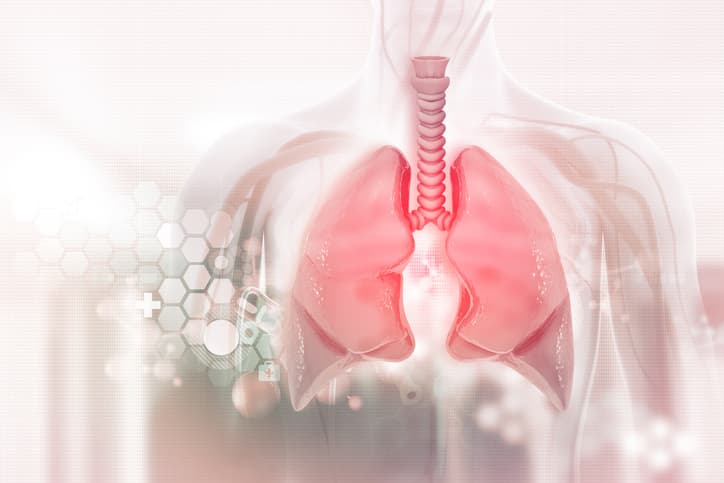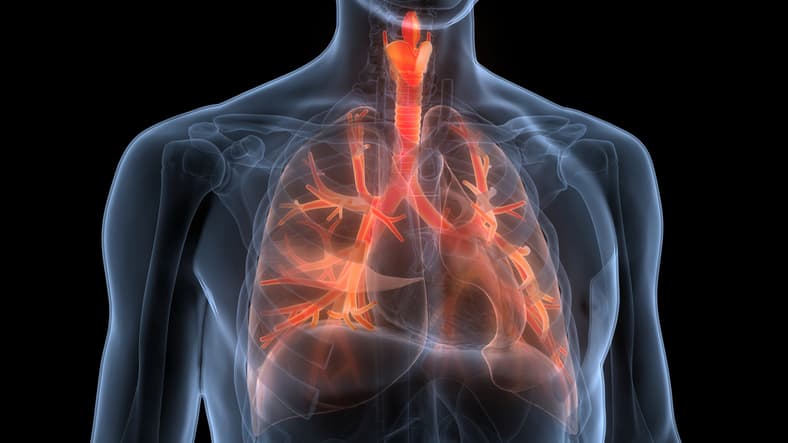According to the CDC, Chronic Obstructive Pulmonary Disease (COPD) was the fourth leading cause of death in 2018 in the United States. It affects close to 16 million adults in America, often those aged 65 and older. However, it can occur in younger adults as well. Since 2000, more women than men have been diagnosed with COPD and have died from this disease.
What Is COPD?

COPD is a medical term used to refer to chronic lung diseases, such as chronic bronchitis and emphysema. People with COPD will experience breathlessness with a chronic cough that may or may not include phlegm (mucus). Some people will also feel a lack of energy and be tired.
- Chronic – This means the disease is always present and is incurable. However, there are things you can do to slow the progression of the disease.
- Obstructive – This means that the airways in the lungs are obstructed in some manner so that air in and out of the lungs can flow easily. The airways are often swollen and contain mucus blocking the airflow.
- Pulmonary – This means the condition is located in your lungs.
- Disease – This means your lungs are damaged in some manner. Even though COPD cannot be cured, there are still viable treatments.
What Are COPD Symptoms?
Most people often notice the early warning signs of COPD, which are shortness of breath and coughing. However, they believe these signs are a normal part of getting older. As a result, the early stages of COPD are usually present for years before a diagnosis is made.
So, if you notice you are coughing more and are experiencing shortness of breath, it is important to be tested for COPD. Testing can involve getting a lung CT scan and a Spirometry test.
Other common COPD symptoms to look for include:
- Wheezing
- Chest tightness
- Periodic problems breathing
- Increased shortness of breath periods
- More frequent coughing (dry or with mucus)
- Feeling unusually tired for no reason
Furthermore, COPD symptoms can vary from one person to the next, so you may not always experience all of these symptoms.
What Are the 4 Stages of COPD?
The four stages of COPD are based on the GOLD criteria since the disease includes several different types of lung diseases that can occur simultaneously. Medical professionals use COPD stages and GOLD criteria to determine how severe COPD is and what COPD treatments are best for you.
Basis of GOLD Criteria Grading
The Global Initiative for Chronic Obstructive Lung Disease (GOLD) evaluates the COPD stage using the following criteria:
- The type of symptoms being experienced
- The number of times COPD has worsened
- The number of hospital stays from COPD
- Test results from lung CT scans and Spirometry tests
In addition, Spirometry tests have four GOLD grades based on the severity of symptoms and include:
- Mild – GOLD 1
- Moderate – GOLD 2
- Severe – GOLD 3
- Very Severe – GOLD 4
Determining COPD Stages
Furthermore, the Spirometry test results are used to determine COPD stages. The test results use two basic measures:
- FVC (Forced Vital Capacity) – The FVC measure is the amount of air you can breathe out after taking as deep a breath as possible.
- FEV-1 (Forced Expiratory Volume) – The FEV-1 measure is the amount of air you can exhale in one second.
In addition, your healthcare providers will consider other health problems and your exacerbation risk with determining COPD stages. COPD exacerbations refers to a worsening of symptoms that are also called “flare-ups.” Exacerbations can last several days or weeks and often require some medical treatment.
Once your exacerbation risks, symptoms, and test results are evaluated, your healthcare provider will assign you to one of four different COPD groups, as follows:
- Group A: Few symptoms and low rIsk
- Group B: More symptoms and low risk
- Group C: Few symptoms and high risk
- Group D: More symptoms and high risk
Groupings are a newer classification staging method that replaces the older COPD staging system that determined your stage using the FEV-1 score.
- Stage 1 COPD – Mild COPD – FEV-1 score of 80 percent or greater.
- Stage 2 COPD – Moderate COPD – FEV-1 score of 50 percent to 79 percent.
- Stage 3 COPD – Severe COPD – FEV-1 score of 30 percent to 49 percent.
- Stage 4 COPD – Very Severe COPD – FEV-1 score of less than 30 percent.
It is worth noting the GOLD criteria for COPD classify patients into each GOLD grade using the same range of FEV-1 scores as the old COPD stages.
What Are COPD Treatment Guidelines?
COPD treatment guidelines are based on the GOLD criteria standards, which provide recommendations for various forms of treatments based on the stage or grade of COPD. Drug-free COPD treatments include:
- Physical Activity – Increasing exercise and physical activities can help strengthen the lungs and reduce the risks of infections and illnesses.
- Vaccinations – Getting vaccinated for respiratory-related illnesses, such as pneumonia, influenza, and COVID, can help reduce the risks of getting them. Otherwise, if someone has COPD and gets sick, they are at greater risk of respiratory distress and respiratory failure.
- Quit Smoking – Cigarette and tobacco smoke irritates the lungs and further aggravates COPD. Prescription medications, patches, gums, and lozenges are viable smoking cessation tools. The current GOLD criteria standards do not recommend using e-cigarettes to quit smoking.
- Eat Healthily – Eating a healthy, well-balanced diet helps reduce the risks for other diseases and illnesses, which could further increase the likelihood of COPD exacerbations..
There are also medication treatments for COPD, such as:
- Bronchodilators
- Steroids
- Combo inhalers
- Phosphodiesterase-4 inhibitors
- Antibiotics
- Theophylline
- Pulmonary rehab program
- Oxygen therapy
What Are COPD Exacerbation Treatments?
COPD exacerbation treatments are additional forms of treatments for COPD that are necessary when someone experiences a “flare-up” of their current symptoms. Exacerbations are usually caused by a bacteria or viral infection in the lungs. They can also occur if you have allergies or are exposed to excessive smoggy or dusty air quality.
Common forms of treatment include the use of antibiotics, antivirals, inhalers, oxygen, corticosteroids, and SABA (short-acting beta2-agonists). The treatment objective is to reduce the impact of the infection on COPD.
In cases where medication and other treatments are insufficient, surgical options could be considered, such as a lung transplant, lung reduction, or bullectomy.
COPD Prevention
The best prevention for COPD is not to smoke and avoid second-hand smoke. You should also avoid dusty, dirty, and smoggy air conditions whenever possible. Quit smoking If you currently smoke, as it can reduce your risks of developing COPD later.
If you are experiencing respiratory problems or coughing and have no illnesses, talk to your healthcare provider about getting a CT lung scan and a Spirometry test. The sooner COPD is diagnosed, the easier it is to manage the condition.
Sources:
Basics about COPD. (2021). https://www.cdc.gov/copd/basics-about.html
Emphysema. https://www.mayoclinic.org/diseases-conditions/emphysema/symptoms-causes/
Fletcher, Jenna. (2019). What to know about bullectomy. https://www.medicalnewstoday.com/articles/325469
Understanding COPD exacerbations. (2019). https://www.copd.com/copd-progression/copd-exacerbations/


